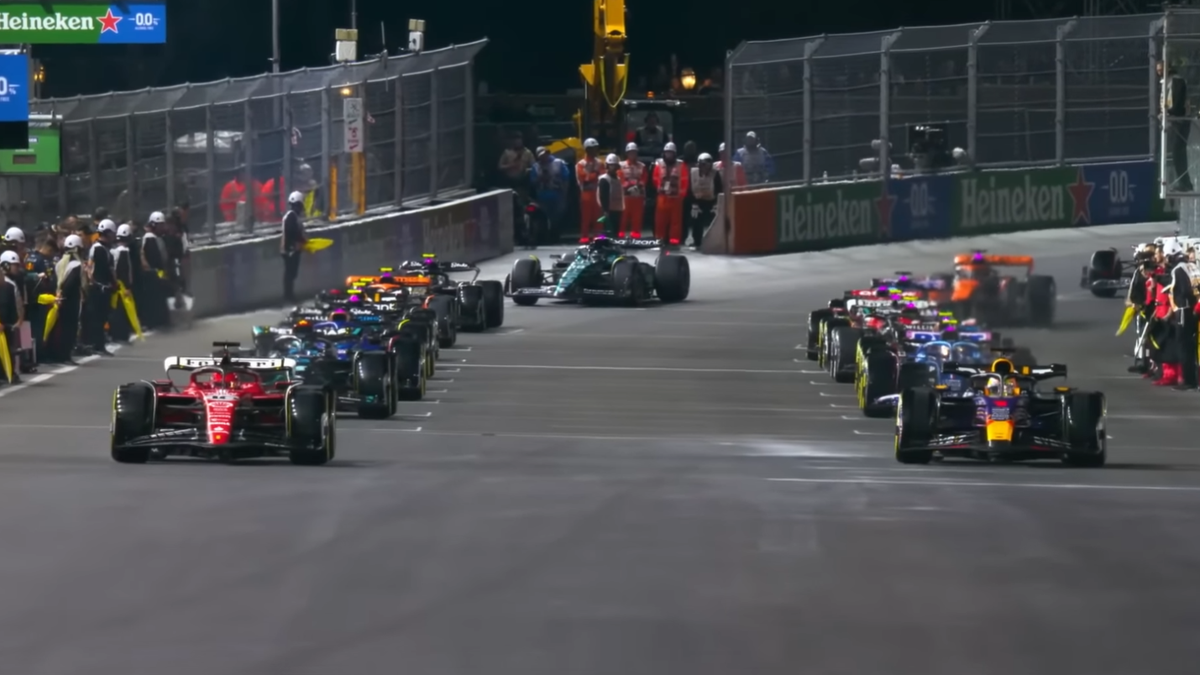For the second year running the Formula 1 race in the desert metropolis of Las Vegas, Nevada is throwing another challenge at the 20 drivers on the grid, the biting cold. As I sit here writing this, it is currently 38 degrees in Las Vegas. The coldest Grand Prix on record was the 1978 Canadian Grand Prix, which was held at a race low of 41 degrees. The night race on the Vegas strip could get that low. The engines powering each of the Grand Prix cars will thrive in the oxygen-dense cold air, but the tires will struggle, and more importantly, so will the drivers.
The race will take place on Saturday night from 10PM local time and last about two hours, as usual. The race is held in the middle of the night to allow F1’s Euro-heavy fanbase to watch the race at a normal time. The track features some of the longest straights on the F1 calendar, and very few of the corners are taken at high-speed. Teams will likely be running a low-downforce setup to allow them to keep cars behind at bay. These two factors combine to make tire temperature a critical concern.
Teams will use tire warming blankets in the garages to get initial temperature into the tires, pushing the temps up to 158 degrees. Once they get on track, however, the long straights will suck a lot of that heat out in transfer to the air and cold track. As the cars sit on the grid waiting for the red lights to go out, the temperature is bleeding off rapidly. A mid-race safety car could suck any heat the drivers managed to build right out of the tires. Without enough heat the tires will be more susceptible to lockups and premature wear.
Aside from tires, the drivers are most worried about their hands in the just-above-freezing temperatures. Ahead of the 2023 Las Vegas Grand Prix Nico Hülkenberg told the New York Times that he “couldn’t open my hands” following a cold weather test. “After a few laps, your fingers get so cold, they’re stuck in that position, and they lose feeling.” In an open cockpit car the driver’s hands are occasionally up in the flow of the cold air, which could cause issues. Teams will work with their drivers to figure out the best compromise of comfort and speed, adding hand warmers or building thicker gloves to block the air.
Fans trackside should probably bundle up to keep their core body temperatures in check. The drivers will essentially be doing a calisthenics workout during the race, so the parts of them out of the airflow should be warm enough inside their driver suits and helmets.
Colder air is more dense, so the engines will be getting more oxygen into them for better burn and a bit more power. That said, denser air also means more aerodynamic drag on the bodywork. Typically drag wins over the horsepower gains, so while the cars will be running over 200 miles per hour down the Vegas strip, they might actually be a tick faster if they were running in the heat.
In any case, look for an interesting and exciting battle with maybe some unexpected successes this weekend. It’s all happening in Vegas.


